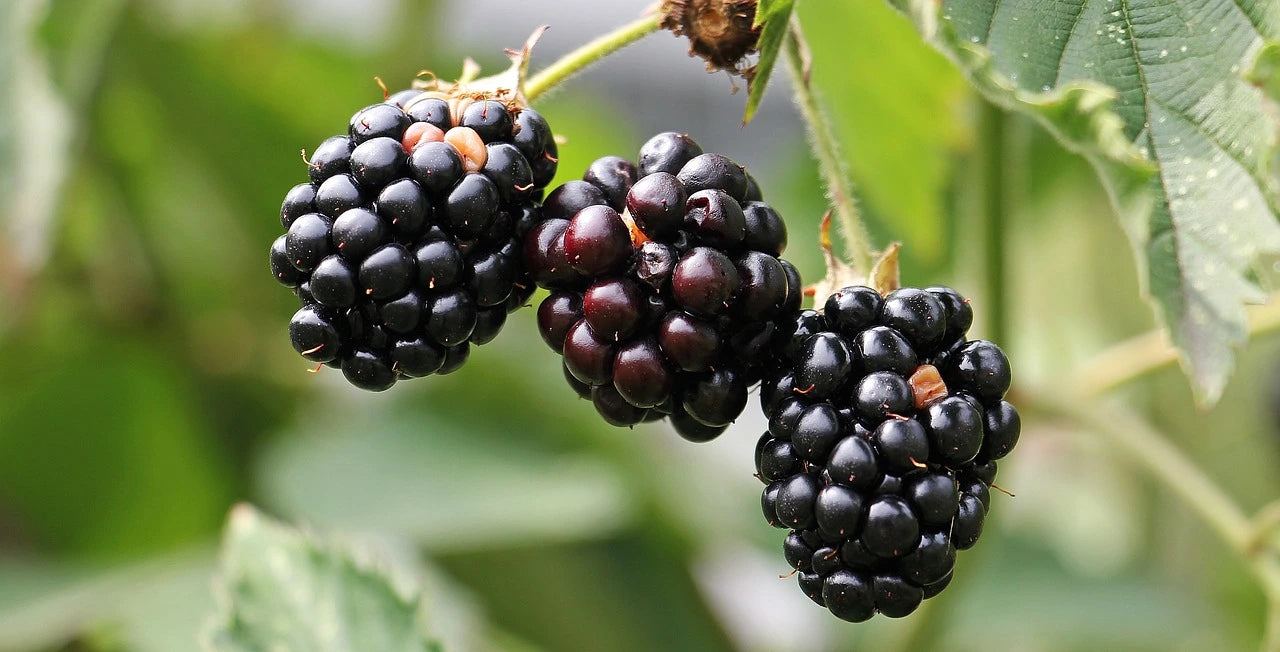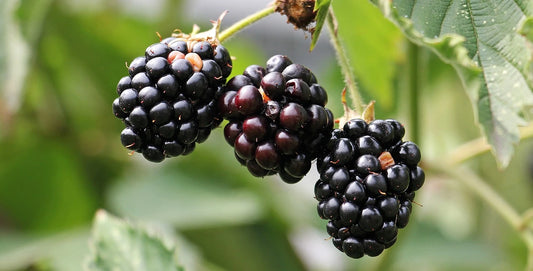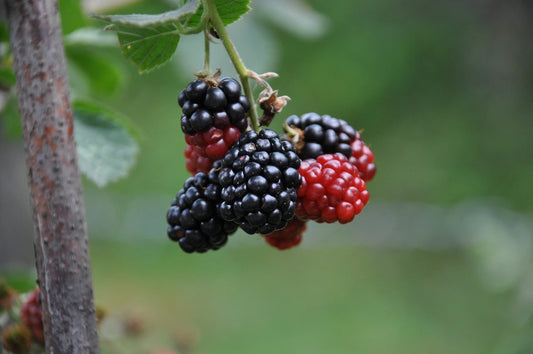-
Delivery from 10 plants within 15 days FR/ EU / CH
Delivery Terms -
Wholesale Supplier of Small Fruit Plants
About Us -
Quality Small Fruit Plants
Technical itinerary for small fruits -
Secure payment
Our Payment Terms
Organic Mulberry Plant Tayberry - 1.6 liter pot
Organic Mulberry Plant Tayberry - 1.6 liter pot
Price € excluding VAT per unit excluding transport. Our prices are based on volume. We offer you the best option based on your needs.
Couldn't load pickup availability
 Buy now and get it delivered when you're ready to plant - Add your desired date to your quote request
Buy now and get it delivered when you're ready to plant - Add your desired date to your quote request
 Delivery from 10 plants within 15 days FR/ EU / CH
Delivery from 10 plants within 15 days FR/ EU / CH
This small fruit plant is a 1.6 litre potted plant
This plant is stored in a 1.6 liter pot. These plants are more robust than potted or bare-root plants because they are more mature. The potted packaging allows the plant to store water and nutrients and thus allows storage before planting in the ground. However, excessive storage should be avoided to prevent the roots from twisting, which would reduce the plant's ability to recover.
These small fruit plants for professionals are certified organic AB
Buying professional organic berry plants from AB allows you to produce organically. Fruits can be sold organically.
When to Plant / When to Harvest Mulberry Trees?
Do you want to grow blackberries but don't know when to plant them? Do you want to know when you'll harvest them? Check out our Mulberry Planting and Harvesting Calendar
View full details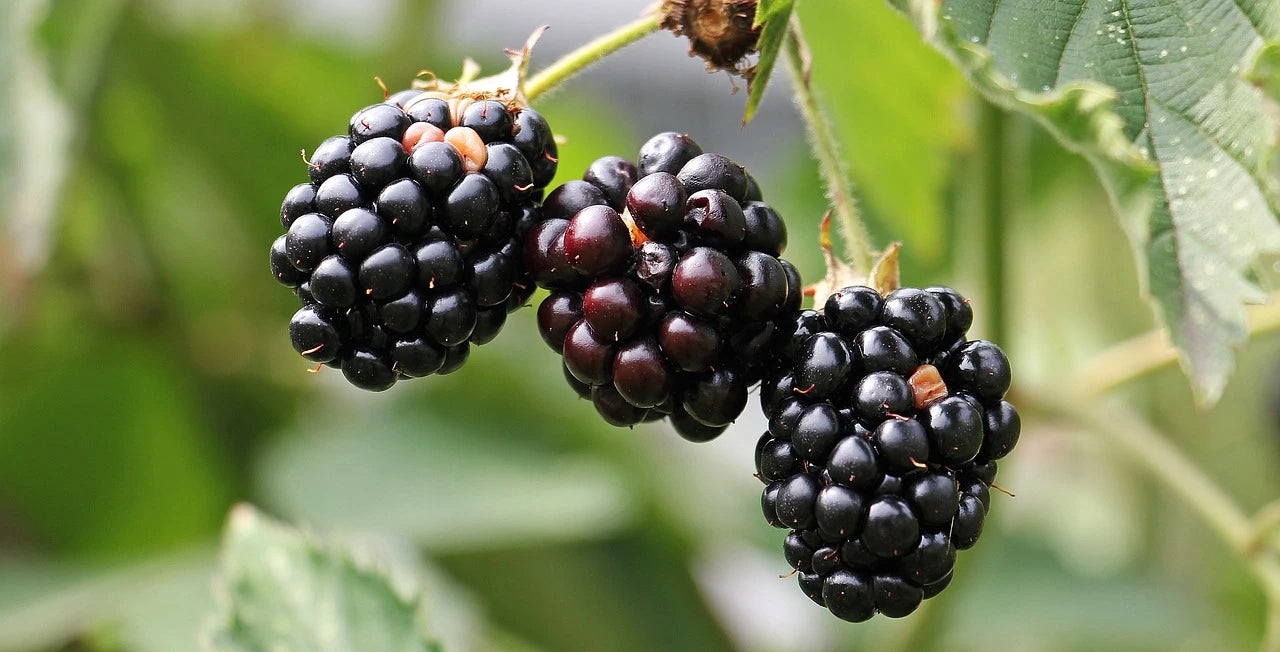
Our quality mulberry trees for professional market gardeners
Quick read / the essentials on Mulberries
Mulberry trees are playing a growing role in the small fruit market in France. Valued for their tasty, antioxidant-rich fruits, they appeal to producers seeking diversification, short supply chains, and high added value. Thornless varieties such as Black Satin , Triple Crown , or Dirksen Thornless , and hybrids such as Tayberry or Loganberry , modern Mulberry trees combine yield, hardiness, and adaptability to diverse terroirs. Their cultivation offers excellent prospects, particularly in organic or sustainable agriculture.
Bairiverse , a specialist wholesale supplier of small fruit plants , offers a wide selection of Mulberry plants adapted to the needs of professionals: mini-balls, horticultural pots, 1 to 4 liter pots, bare roots or plants ready to repot. All our plants are available in organic, untreated or conventional versions, with fast delivery throughout France and Europe.
Our goal: to enable market gardeners, arborists, and nurserymen to purchase robust and high-performance mulberry plants at the best price/quality ratio. Thanks to our network of partner nurseries and our technical expertise, you benefit from personalized support, quotes within 48 hours, and comprehensive technical support to ensure successful planting.
Trusting Bairiverse means choosing a specialist wholesale supplier of berry plants recognized for the quality of its plants, its serious logistics and its commitment to producers. Whether you want to buy mulberry plants for agroforestry, intensive cultivation or direct sales, we have the right solutions. Simplify your supply with a responsive, competitive and committed wholesale supplier of berry plants at your side.
Presentation of our range of Mulberry trees
Our range of mulberry trees for professionals is aimed at market gardeners, nurserymen, arboriculturists and small fruit producers wishing to equip themselves with robust, productive plants adapted to market requirements. All our plants are available in organic, untreated and conventional versions , to meet the different cultivation specifications and the growing demand for organic and HVE circuits.
We offer a wide range of small fruit plants , with various formats to suit all planting methods:
- Wide range of small fruit plants in mini-balls and honeycomb trays
- Mini-clods in a tray of 77 units , practical for planting in the ground or in pots
- Wide range of small fruit plants in horticultural pots (7 cm, 8 cm, 9 cm)
- Wide range of small fruit plants in pots : 1L, 1.5L, 1.6L, 2L and 4L
- Bare root plants , suitable for autumn and winter planting
- Plants ready to repot , intended for nursery resellers or producers under cover
Our plants come from nurseries specializing in small fruits, selected for their mastery of modern varieties such as Black Satin , Triple Crown or Dirksen Thornless , renowned for their vigor , high yield and exceptional flavor .
All plants are available for purchase online or on quote , and delivered directly to your home, to your plot or to a store , throughout France and Europe, with secure packaging and possible dispatch within 15 days.
Mulberry cultivation in France: current situation and prospects
The French blackberry market is growing strongly , driven by growing demand and a still insufficient national supply . Currently, only 50 hectares are dedicated to growing mulberries in the country, while imports have increased by 150% in ten years .
Market structure
-
Three countries dominate blackberry imports into France:
- Spain: 32%
- Portugal: 29%
- Morocco: 22%
-
These three countries represent 84% of the volumes imported into the French market.
This dependence on imports reveals an opportunity for local production : French professionals can position themselves as suppliers of quality, fresh and traceable French blackberries .
Production and opportunities
- Significant gap between national supply and demand
- Blackberries are seen as a superfood rich in antioxidants, highly appreciated by the younger generations
- Strong potential in short supply chains, organic supermarkets, artisanal processing and catering
Professional Mulberry Plant Market Trends
The mulberry plant market is experiencing a diversification of formats and varieties offered, with a clear increase in organic supply:
- Plates of 77 mini-clods (3.5 cm) from €1.69 excluding VAT
- 9 cm cups from €2.46 excluding VAT
- 1.6 L pots from €6.89 excluding VAT
Popular varieties among professionals:
- Black Satin : thornless variety, very productive
- Triple Crown : sweet flavor, good post-harvest shelf life
- Dirksen Thornless : vigorous, adapted to different climates
- Tayberry , Thornless Loganberry : Hybrids sought for processing
Organic plants are increasingly available , meeting growing demand from producers keen to limit their environmental impact.
Opportunities and challenges for mulberry producers
Development opportunities
- Rarity of national production = high added value for sale
- Growing organic market : mulberry trees perfectly adapted to this dynamic
- High profitability on small areas in intensive cultivation or agroforestry
- Interesting diversification for market gardeners or arboriculturists
Technical challenges
- Large workforce for harvesting
- Weed management without herbicides
- Protection against diseases without systematic use of inputs
- Climate risk (spring frost, water stress, heat waves)
These constraints require a complete technical itinerary , which we make available to our customers upon request, accompanied by personalized technical advice and varieties adapted to their pedoclimatic context .
Our commitments to professionals
As a specialist in small fruits , we provide professionals with a complete and reliable range of professional quality mulberries , with tailor-made services:
- The widest range of mulberry varieties in France
- Plants at producer prices , with decreasing prices according to volumes
- Direct delivery to your farm, plot or point of sale , in France and Europe
- Free, personalized quotes , sent within 48 hours
- Responsive sales service and quality after-sales service
- Dedicated technical support , including cultivation itineraries and post-delivery assistance
- Smooth supply , without disruption, with delivery possible within 15 days
- Quick and easy online ordering to gain independence
We support professionals towards local, sustainable and profitable blackberry production , by providing them with suitable, certified plants available all year round .
General Presentation of Mulberry Trees for Culture Professionals in France
Mulberry and blackberry cultivation in France is experiencing renewed interest, driven by a dynamic market, diversified outlets, and increased demand for berries. This fact sheet provides a technical and economic overview for professionals, covering the entire production process, from establishment to marketing.
Market Context
The French blackberry market is experiencing sustained growth. Between 2015 and 2020, national production increased from 1,250 to approximately 1,500 tonnes, a 20% increase. Cultivated areas also increased, reaching nearly 300 hectares. Approximately 15% of these areas are managed organically. Across Europe, the berry sector, including blackberries, is expected to grow at a compound annual growth rate (CAGR) of 5.8% between 2021 and 2026, reflecting growing consumer demand for healthy, natural products.
Choice of Varieties and Rootstocks
The choice of variety is crucial and must meet several criteria: hardiness, yield (from 5 to 25 t/ha depending on the variety), fruit size (4 to 8 g), disease resistance, maturity period, etc. Varieties such as 'Loch Ness' or 'Triple Crown' are popular for their productivity.
The use of rootstocks (Morus alba, Morus rubra, Morus nigra) optimizes soil adaptation, vigor, and tolerance to abiotic stress. These choices directly influence the success of the plantation and the longevity of the orchard.
Implementation of the Plot
The success of an orchard begins with careful soil preparation. A pH between 6.0 and 6.5 is ideal. Deep cultivation (plowing, subsoiling), organic matter additions (30-40 t/ha), careful basal fertilization, and good soil refinement are necessary. Spacing varies depending on the variety's growth habit, between 1.5 and 3 m in the row and 2.5 to 3 m between rows. Planting density can reach 1,300 to 2,500 plants/ha.
Irrigation and Water Management
With annual water requirements estimated at 700-800 mm, irrigation is a key factor in productivity. Drip irrigation , coupled with an automated system, maximizes application efficiency while saving up to 50% water compared to sprinkling. Applications should be adjusted according to the weather, the stage of development and visible signs of water stress.
Fertilization
Plant nutrition must be tailored to the growing system. In conventional farming, balanced NPK fertilizers and split feeding are recommended. In organic farming, natural fertilizers such as compost, guano, or bone meal are used. Foliar fertilization with trace elements can supplement soil inputs, especially during periods of high demand.
Pollination
Most mulberry trees are self-fertile, but cross-pollination, particularly by honeybees , can improve fruit set and quality. It is advisable to install 2 to 4 hives per hectare. For dioecious species, a ratio of 1 male plant to 5 to 8 female plants is necessary.
Pruning and Training
Training is essential for creeping or semi-erect varieties. It facilitates harvesting, improves ventilation, and reduces the risk of disease. Winter pruning helps structure the plant and remove unwanted wood. Light summer pruning helps balance the fruit load. Thinning can also be done to improve size.
Protection of Culture
Mulberry trees can be exposed to several stresses: frost , drought , intense rain or weeds . Systems such as anti-frost sprinkling, mulching, drainage, windbreaks or mechanical weed management are recommended. In organic farming, natural preparations (slurries, black soap) provide effective protection without chemical residues.
Harvest and Post-Harvest
The harvest period runs from mid-July to the end of September . The fruits are picked when they are well colored, supple, and easy to detach. To ensure good quality, harvesting every 2-3 days is recommended. Yields vary from 5 to 15 t/ha. Rapid refrigeration at 1-2°C extends the shelf life to 3-5 days. Packaging in trays or ventilated baskets preserves the integrity of the fruits.
Commercial Opportunities
Blackberries can be sold fresh (markets, direct sales, supermarkets) or processed (juices, purees, jams, natural colorings). They are also of interest to the cosmetics and pharmaceutical sectors. The demand for organic, local and eco-responsible products opens up new business opportunities.
Grants and Subsidies
Aid can be obtained at national (FranceAgriMer, food sovereignty plan) and European (EAFRD) levels. They aim to support planting , conversion to organic farming , the modernization of orchards or the installation of efficient irrigation systems . It is recommended to contact the chambers of agriculture or the DDT(M) to find out about the systems in force.
To summarize: Mulberry trees
Mulberry trees offer exceptional potential for small fruit professionals: rapid growth, generous production, antioxidant-rich fruit, and adaptability to the demands of both the organic and conventional markets. In France, the cultivated area remains limited, which represents a real opportunity for producers capable of offering fresh, traceable French blackberries. Varietal diversity makes it possible to target a variety of outlets, ranging from direct sales to artisanal processing, including supermarkets and specialized channels.
At Bairiverse , a specialist wholesale supplier of small fruit plants , we provide professionals with a complete and high-quality offer: Mulberry plants available all year round, in different formats to adapt to all production strategies. Whether for planting in autumn, spring or under cover, we guarantee healthy, vigorous plants that comply with the most demanding agricultural specifications.
Buying Mulberry plants from Bairiverse means benefiting from volume-based pricing, responsive customer service, simplified ordering, and dedicated technical support. Our experts will assist you every step of the way: variety selection, planting schedule, growing advice, and post-delivery monitoring. As a specialist wholesale supplier of small fruit plants , we are committed to securing your projects and optimizing your yields.
Whatever your technical itinerary, we help you purchase mulberry plants adapted to your soil and climate context and your markets. Choose a specialist wholesale supplier of small fruit plants that combines expertise, proximity, and performance. With Bairiverse , you give your blackberry crop every chance of success.
-
Thornfree bare-root mulberry plant, height 20/40 cm
Regular price €0,66 EURRegular priceUnit price / per -
Thornfree bare-root mulberry plant, height 30/50 cm
Regular price €0,79 EURRegular priceUnit price / per -
Thornfree bare-root mulberry plant, height 40/60 cm
Regular price €1,11 EURRegular priceUnit price / per -
Thornfree bare-root mulberry plant, height 50/80 cm
Regular price €1,25 EURRegular priceUnit price / per
Additional / Useful information:
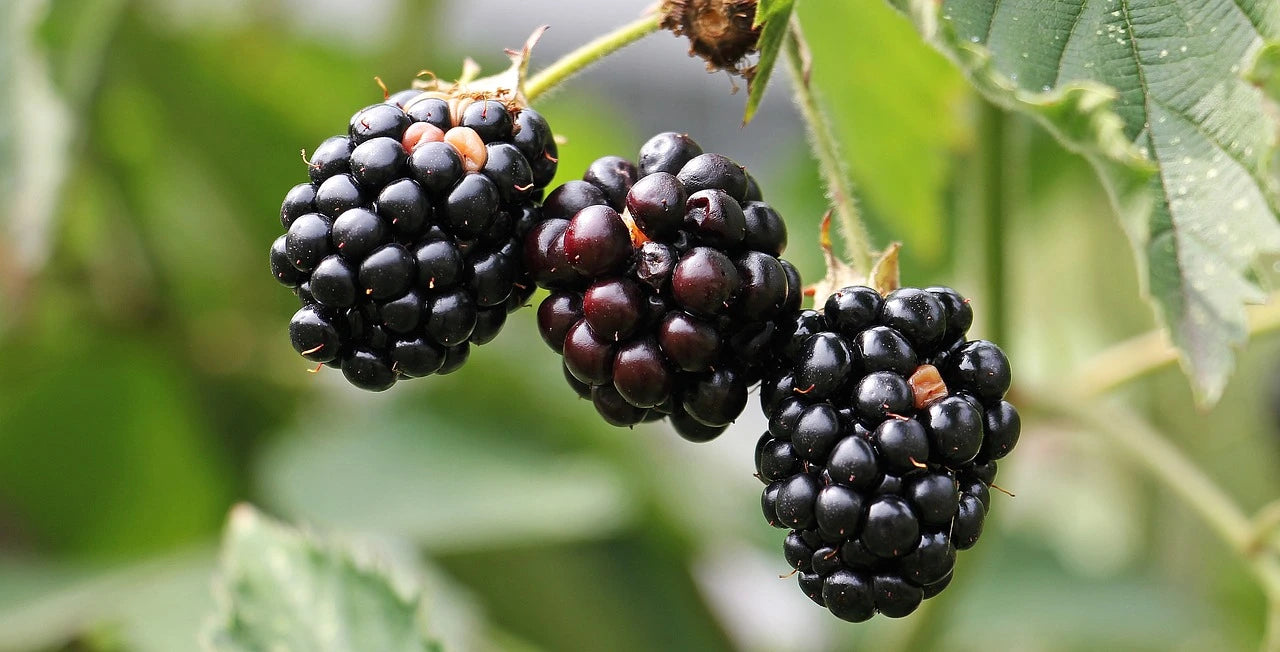
Which variety of mulberry should you choose? Characteristics and uses of mulberry trees
How to choose your variety of Mulberry?
Are you looking to plant mulberry trees on your plot but unsure which mulberry variety to choose? This mulberry variety guide lists the main varieties, along with their characteristics and uses. For farm sales, supermarket sales, or processing? There's something for everyone.
If you are looking for another variety of mulberry trees, please do not hesitate to contact us: contact us
Our ranges of Mulberries:
Organic Mulberry Range for Professionals
Conventional Mulberry Range for Professionals
Mulberry Variety Guides:
| Variety | Color of the Fruits |
Remontante | Precocity | Productivity | Size / Shape fruits |
Disease Resistance Hardiness |
Fruiting Period | Taste | Self-fertile |
|---|---|---|---|---|---|---|---|---|---|
| Black Satin | Glossy black | Non-remontant | Mid-Season | Very productive, fast-growing variety | Long and soft. Large fruits. | Cold resistant down to -15°C | End of July until October | Makes good jam, jellies or tart. Sweet and fragrant flavor |
Yes |
| Dirksen | Red turning black when ripe | Non-remontant | Mid-season | Abundant productivity | Good caliber, oval | Cold resistance down to -23°C. Very hardy. Good disease resistance |
August to Early September | The flesh is juicy. Sweet and tangy flavor |
Yes |
|
Loch Ness |
Red turning shiny black with purplish reflections when ripe |
Non-remontant | Season | Very productive variety. Its very large fruits help increase the weight per harvested plant. One of the varieties with the best yield |
Large caliber. Approximately 4G. Very elongated |
Disease and mildew resistant | August to October | Very good taste quality. Very low acidity, juicy and deliciously scented. |
Yes |
| Smoothstem | Blue-Black | Non-remontant | Late | High production | Large, elongated fruits | Fairly disease resistant | September to October | Fragrant and slightly tangy. Can be eaten in pies, jellies, jams or anything simply raw when picked. |
Yes |
| Thornfree | Black | Non-remontant | Mid-Season to Late | Abundant harvest in September | Very large, firm fruit | Vigorous variety | July to September | Tasty and juicy | Yes |
|
Triple Crown |
Blue-Black | Non-remontant | Late | One of the highest yielding varieties | "Huge" fruit up to 8 grams | Variety resistant to diseases down to -10°C | August to September | Fragrant, sweet and with wild blackberry aroma | Yes |
| Hirtus | Blue-Black | Non-remontant | Mid-Late | High productivity | Large fruits | August to September | Strong acidity, leaf can be used for herbal tea | Yes | |
| Darrow | Blue-Black | Non-remontant | Early | High production | Large, elongated fruits | Good disease resistance | July-August | Good taste quality, very fragrant | Yes |
Planting and Harvesting Calendar for Mulberry Trees
When to plant mulberry trees? When to harvest blackberries?
Do you want to start growing blackberries but don't know when to plant them? Do you also want to know when you'll be harvesting them?
On this page you will find the planting and harvesting periods for each variety of blackberry.
| Mulberry tree | Jan | Feb | Mar | Apr | May | Jul | Jul | Aug | Sep | Oct | Nov | Dec | Harvest rate / Production yield | |||||||||||||
|---|---|---|---|---|---|---|---|---|---|---|---|---|---|---|---|---|---|---|---|---|---|---|---|---|---|---|
| Black Satin Mulberry | Planting | 1 year after planting: small harvest 2 years after planting: first yield |
||||||||||||||||||||||||
| Harvest | ||||||||||||||||||||||||||
| Dirksen Mulberry | Planting | 1 year after planting: small harvest 2 years after planting: first yield |
||||||||||||||||||||||||
| Harvest | ||||||||||||||||||||||||||
| Loch Ness Mulberry Tree | Planting | 1 year after planting: small harvest 2 years after planting: first yield |
||||||||||||||||||||||||
| Harvest | ||||||||||||||||||||||||||
| Smoothstem Mulberry | Planting | 1 year after planting: small harvest 2 years after planting: first yield |
||||||||||||||||||||||||
| Harvest | ||||||||||||||||||||||||||
| Thornfree Mulberry | Planting | 1 year after planting: small harvest 2 years after planting: first yield |
||||||||||||||||||||||||
| Harvest | ||||||||||||||||||||||||||
| Triple Crown Mulberry | Planting | 1 year after planting: small harvest 2 years after planting: first yield |
||||||||||||||||||||||||
| Harvest | ||||||||||||||||||||||||||
| Hirtus Mulberry | Planting | 1 year after planting: small harvest 2 years after planting: first yield |
||||||||||||||||||||||||
| Harvest | ||||||||||||||||||||||||||
| Darrow Mulberry | Planting | 1 year after planting: small harvest 2 years after planting: first yield |
||||||||||||||||||||||||
| Harvest | ||||||||||||||||||||||||||
Black Satin Mulberry: Planting and Harvesting Period
Black Satin Mulberry is planted from September to November or from February to May. The fruiting/harvesting period for Black Satin Mulberry is from late July to October. Black Satin Mulberry is a non-remontant variety.
Dirksen Mulberry Tree: Planting and Harvesting Period
Dirksen Mulberry is planted from September to November or from February to May. The fruiting/harvesting period for Dirksen Mulberry is from August to early September. Dirksen Mulberry is a non-remontant variety.
Loch Ness Mulberry Tree: Planting and Harvesting Time
Loch Ness Mulberry is planted from September to November or from February to May. The fruiting/harvesting period of Loch Ness Mulberry is from August to October. Loch Ness Mulberry is a non-everbearing variety.
Smoothstem Mulberry: Planting and Harvesting Time
Smoothstem Mulberry is planted from September to November or from February to May. The fruiting/harvesting period for Smoothstem Mulberry is from September to October. Smoothstem Mulberry is a non-remontant variety.
Thornfree Mulberry: Planting and Harvesting Time
Thornfree Mulberry is planted from September to November or from February to May. The fruiting/harvesting period of Thornfree Mulberry is from July to September. Thornfree Mulberry is a non-remontant variety.
Triple Crown Mulberry: Planting and Harvesting Time
The Triple Crown Mulberry is planted from September to November or from February to May. The fruiting/harvesting period for the Triple Crown Mulberry is from August to September. The Triple Crown Mulberry is a non-everbearing variety.
Hirtus Mulberry: Planting and Harvesting Period
Hirtus Mulberry is planted from September to November or from February to May. The fruiting/harvesting period for Hirtus Mulberry is from August to September. Hirtus Mulberry is a non-remontant variety.
Darrow Mulberry: Planting and Harvesting Period
Darrow Mulberry is planted from September to November or from February to May. The fruiting/harvesting period for Darrow Mulberry is from July to August. Darrow Mulberry is a non-remontant variety.
French Blackberry and Mulberry Market in 2025
In 2025, the French blackberry market will continue to expand, driven by growing demand for this prized fruit, both fresh and in processed products such as jams and juices. Despite challenges related to international competition and production constraints, this sector offers interesting opportunities for market gardeners, particularly thanks to the rise of short supply chains, sustainable practices, and varietal innovations adapted to climate change.
Presentation and commercial uses
The mulberry tree is a medium-sized tree or shrub (10 to 15 meters) belonging to the Moraceae family . Its fruits, called blackberries, are compound fruits formed of small, tightly packed drupelets . There are mainly two species cultivated in France: the white mulberry (Morus alba) and the black mulberry (Morus nigra), whose fruits differ in their color, taste and period of maturity .
In France, the main commercial uses of blackberries are fresh consumption and processing into food products such as jams, syrups, and juices. Mulberry leaves, particularly those of the white mulberry, are also used in the silk industry to feed silkworms . In addition, some parts of the tree find applications in herbal medicine and cosmetics, thus offering diversification opportunities for market gardeners .
Evolution of the French market
The French blackberry market has seen mixed developments over the past three years. Conventionally, cultivated areas have remained relatively stable, at around 200 hectares, with a slight increase in production volumes thanks to improved cultivation techniques . Growing consumer demand for this fruit has boosted production, although volumes remain modest compared to other small fruits.
For the organic market, we observe a more marked dynamic. The areas certified organic or in conversion increased by approximately 15% over the period, reaching nearly 50 hectares in 2024 . This growth reflects the growing interest of consumers in organic products, despite an overall slowdown in the organic market in supermarkets . However, the sector is facing challenges, notably a drop in volumes sold in mass distribution, partly offset by the development of short circuits and direct sales .
Current market status
The French blackberry market in 2024-2025 shows contrasting trends between conventional and organic products. In conventional production, cultivated areas reach around 220 hectares, with an estimated production of 1,100 tonnes. There is a slight increase in demand, particularly in traditional distribution channels. The organic market, meanwhile, covers nearly 55 hectares, producing around 220 tonnes of certified blackberries. Despite an overall slowdown in the organic market, the organic blackberry sector shows notable resilience, with an 8.4% increase in turnover in specialist stores in the first half of 2024. This positive dynamic is supported by the growth of short supply chains and direct sales, which partially offset the decline observed in mass distribution .
Producing regions and terroirs
Blackberry production in France remains relatively limited, with a few dominant regions. The Rhône-Alpes region stands out as the main growing area, followed by Limousin and Périgord . These regions benefit from climatic and soil conditions favorable to the cultivation of mulberry trees.
Regional specificities play a crucial role in the success of this culture:
- Climate: Mulberry trees adapt well to temperate climates, with a preference for warm summers and mild winters. Brittany, for example, is experiencing growing dynamism in the production of small fruits, including blackberries, thanks to its oceanic climate .
- Soils: Mulberry trees thrive in well-drained, slightly acidic to neutral soils. Loamy clay soils, common in these regions, are particularly suitable .
- Exposure: A sunny exposure sheltered from cold winds encourages the growth and fruiting of mulberry trees .
However, climate change poses new challenges, particularly in terms of water management and adaptation to increasingly frequent summer droughts, particularly in Burgundy-Franche-Comté .
Essential growing techniques
The main mulberry varieties grown in France are the black mulberry (Morus nigra) and the white mulberry (Morus alba). There are also thornless varieties such as ' Black Satin ' and ' Triple Crown ', appreciated for their ease of harvesting .
Agronomic requirements:
- Soil: Well-drained, rich in humus, slightly acidic to neutral pH
- Climate: Adapted to temperate climates, resistant to heat (up to 38°C)
- Irrigation: Regular watering, especially for young plants
- Density: Spacing of 1.5 to 2 meters between plants
Average yields in conventional farming can reach 20 kg per plant for certain varieties . In organic farming, yields are generally 25 to 30% lower . Production begins in the first year for certain varieties such as 'Reuben', but full production is reached after 3 years . A well-maintained plantation can remain productive for 15 to 20 years.
Trade and international competition
France occupies a modest position in the international blackberry market, with limited production compared to the world's major producers. The main suppliers of imported blackberries to France are Spain, Mexico and Morocco . Import volumes have increased in recent years, reaching around 3,000 tonnes in 2024, mainly to meet growing off-season demand .
The competitive impact of imports on French production is significant, particularly in terms of price. Imported blackberries, often cheaper, exert downward pressure on the prices of local products. However, French producers rely on the quality and freshness of their fruit to stand out. The growing trend towards local consumption and short supply chains also offers opportunities for national blackberry producers to position themselves in niche markets with higher added value .
Development opportunities
The blackberry market in France offers interesting opportunities for producers, both conventional and organic. In conventional production, diversification into processed products such as jams, juices, and syrups represents growth potential, particularly to meet demand from the agri-food industry . Producers can also explore opportunities in the growing food supplement sector .
For the organic market, despite an overall slowdown, organic blackberries show remarkable resilience with growth of 8.4% in specialist stores . Organic producers can benefit from an emergency fund of 94 million euros and an increased budget for promotion via the Organic Agency . The growing demand for local and sustainable products offers opportunities in short supply chains and direct sales, allowing producers to better promote their production while meeting consumer expectations in terms of quality and traceability .
Profitability and financial aid
Blackberry production presents significant differences between conventional and organic farming in terms of costs and profitability. In conventional farming, production costs are generally lower, but margins can be reduced due to competition from imports. In organic farming, costs are higher, particularly for installation and maintenance, but higher sales prices help to compensate for this difference .
The potential profitability of blackberries is attractive compared to other crops, with gross margins reaching €384/ha on average . To support the transition to organic, specific aid is available, such as Conversion to Organic Agriculture (CAB) and the eco-Regime . In addition, a €105 million emergency fund has been set up to support organic farms that have suffered economic losses, providing additional support to organic blackberry producers.
Sector challenges and risks
Blackberry production in France faces several challenges, both in the conventional and organic markets. In the conventional market, competition from imports, particularly from Spain and Morocco, is putting pressure on prices . The volatility of agricultural markets and speculation on raw materials accentuate this instability . Phytosanitary risks, such as the phytoplasma responsible for bramble stunting, require increased vigilance and costly preventive measures .
For the organic market, the constraints are specific. Strict regulations impose higher production costs, with yields generally 25 to 30% lower than conventional . Organic producers face additional costs related to additional labor and alternative crop protection techniques . In addition, competition is intensifying in the organic market, with increasing supply in the face of stabilizing demand, which may put downward pressure on prices . Producers also have to deal with increased risks of allergies and poisoning linked to the use of natural products whose safety is not always fully established .
Innovations and future prospects
The blackberry sector in France is experiencing significant advances in innovation and research. Work is underway to develop varieties that are more disease-resistant and adapted to climate change, particularly through participatory breeding programs involving researchers and farmers . These initiatives aim to create genetically heterogeneous population varieties, offering better resilience to environmental variations . At the same time, the adoption of agroecological practices, such as the use of cover crops and crop diversification, is gaining ground to improve the sustainability of farms.
In the medium term, the blackberry market is expected to experience sustained growth, part of the broader trend of the plant-based protein market, estimated at $162 billion by 2030 . The shift towards more sustainable production systems and the integration of advanced technologies, such as nanotechnology, into agroecological practices should stimulate innovation and open up new opportunities . Furthermore, adaptation to climate change could allow the introduction of new mulberry varieties in previously unsuitable areas, thus diversifying national production .
Recommendations for market gardeners
Integrating blackberry cultivation presents advantages and disadvantages for French market gardeners. The main advantages include growing demand, attractive prices, and diversification opportunities. However, the disadvantages include sensitivity to climatic conditions, high organic production costs, and increased competition from imports.
Recommendations for market gardeners considering this crop:
- Favor short circuits and direct sales to maximize margins
- Choose varieties adapted to the local terroir and resistant to diseases
- Invest in sustainable growing techniques such as cover crops and crop diversification
- Consider processing (jams, juices) to enhance production and reduce losses
- Exploring opportunities in the organic market, despite higher costs, due to its continued growth
- Integrate effective pollination practices, such as the use of bumblebees, to improve yields
- Training in specific techniques for managing soil fertility in diversified market gardening
A thorough analysis of the local market and available resources is essential before embarking on this cultivation. Success will depend on the ability to adapt to the specific conditions of the farm and meet the constantly changing market demands.
Specialist suppliers and consultants
For professional market gardeners looking for quality mulberry plants or advice on planting a plot, two specialist suppliers stand out on the French market:
- Bairiverse ( https://plantspetitsfruits.com/ ): Wholesale supplier offering a wide range of small fruit plants, including mulberry trees. They offer plants in various formats (mini-plugs, pots, pots) adapted to the needs of professionals . Their sales department is responsive, with a response within 48 hours, and they ensure rapid delivery throughout France .
- Econome à Légumes ( https://economealegumes.fr/ ): A trader in plants and plant material, this company specializes in supplying plants to French professional producers. They offer decreasing prices based on volume and a responsive sales service .
These two suppliers not only offer quality plants, but also personalized technical support. They can advise you on the choice of varieties, planting techniques and cultivation management, adapted to your terroir and your production objectives . Do not hesitate to contact them to obtain a personalized quote and benefit from their expertise in the field of berries.
FAQ Small Fruits: all our planting tips
Find here all our technical itineraries and cultivation guides to optimize your berry yields
Maximize the production and quality of your crops with our technical itineraries
Whether you're a professional market gardener, nurseryman, or crop manager, accessing best practices and technical itineraries is essential to maximizing the yield and quality of your berry harvests. Through a selection of detailed articles and guides, you can benefit from advice on planting techniques, disease and pest management, as well as methods for preserving and optimizing production.
Explore each guide to get proven solutions, specific to the challenges of your operation, and benefit from the technical support of Bairiverse , your supplier of professional quality berry plants in France.
Raspberry bushes:
Which raspberry variety should you choose? Characteristics and uses of raspberry plants
Raspberry Planting and Harvesting Calendar
Blueberry bushes
Which blueberry variety should you choose? Characteristics and uses of blueberries
Planting and Harvesting Calendar for Blueberries
Definition: Blueberry varieties High Chill, Mid Chill, Low Chill and Rabbiteye
Mulberry trees
Which variety of mulberry should you choose? Characteristics and uses of mulberry trees
Planting and Harvesting Calendar for Mulberry Trees
Gooseberry Bushes
Which Variety of Gooseberries Should You Choose? Characteristics and Uses of Gooseberries
Planting and harvesting calendar for Gooseberries
Gooseberry bushes
Which variety of gooseberry should you choose? Characteristics and uses of gooseberries
Planting and Harvesting Calendar for Gooseberries
Blackcurrant bushes
Which variety of blackcurrant should you choose? Characteristics and uses of blackcurrants

